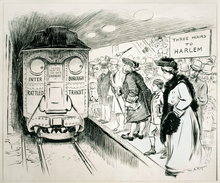Aftermath
The funerals for Clanton and the McLaurys (who were relatively wealthy men) were the largest ever seen in Tombstone, drawing over 2,000 people. The fear of the Cowboys caused many Tombstone residents and businesses to reconsider their calls for the mass killing of Cowboys. Although rowdy, the Cowboys brought substantial business into Tombstone.
The fear of Cowboy retribution and the potential loss of investors because of the negative publicity in large cities such as San Francisco started to turn the opinion somewhat against the Earps and Holliday. Stories that Ike Clanton and Tom McLaury were unarmed, and that Billy Clanton and Tom McLaury even threw up their hands before the shooting, now began to make the rounds. Soon, another Clanton brother (Phineas “Fin” Clanton) had arrived in town, and some began to claim that the Earps and Holliday had committed murder, instead of enforcing the law.
The Spicer hearing
After the gunfight, Wyatt Earp and Doc Holliday (the two men not formally employed as law officers, and the two least wounded) were charged with murder. After extensive testimony at the preliminary hearing to decide if there was enough evidence to bind the men over for trial, the presiding Justice of the Peace Wells Spicer ruled that there was not enough evidence to indict the men. Two weeks later, a grand jury followed Spicer’s finding, and also refused to indict. Spicer, in his ruling, criticized City Marshal Virgil Earp for using Wyatt and Doc as backup temporary deputies, but not for using Morgan, who had already been wearing a City Marshal badge for nine days. However, it was noted that if Wyatt and Holliday had not backed up Marshal Earp, then he would have faced even more overwhelming odds than he had, and could not possibly have survived.
The participants in later history
 A few weeks following the grand jury refusal to indict, Virgil Earp was shot by hidden assailants from an unused building at night – a wound causing him complete loss of the use of his left arm. Three months later Morgan Earp was murdered by a shot in the back in Tombstone by men shooting from a dark alley.
A few weeks following the grand jury refusal to indict, Virgil Earp was shot by hidden assailants from an unused building at night – a wound causing him complete loss of the use of his left arm. Three months later Morgan Earp was murdered by a shot in the back in Tombstone by men shooting from a dark alley.
After these incidents, Wyatt, accompanied by Doc Holliday and several other friends, undertook what has later been called the Earp vendetta ride in which they tracked down and killed the men whom they believed had been responsible for these acts. After the vendetta ride, Wyatt and Doc left the Arizona Territory in April, 1882 and parted company, although they remained in contact.
Billy Claiborne was killed in a gunfight in Tombstone in late 1882, by gunman Franklin Leslie.
Ike Clanton was caught cattle rustling in 1887, and shot dead by lawmen while resisting arrest.
 Later in 1887, just over six years from the time of the O.K. fight, Doc Holliday died of tuberculosis in Glenwood Springs, Colorado, aged 36.
Later in 1887, just over six years from the time of the O.K. fight, Doc Holliday died of tuberculosis in Glenwood Springs, Colorado, aged 36.
Virgil Earp served as the “Town Marshal,” hired by the Southern Pacific RR, in Colton, California. He lived without the use of his arm, although continued as a lawman in California, and died of pneumonia at age 62 in 1905, still on the job as a peace officer.
Johnny Behan failed even to be re-nominated by his own party for the sheriff race in 1882, and never again worked as a lawman, spending the rest of his life at various government jobs, dying in Tucson of natural causes at age 67 in 1912.
Wyatt Earp, the last survivor of the fight, traveled across the western frontier for decades in the company of Josephine Marcus, working mostly as a gambler, and eventually died in Los Angeles of infection, in 1929, at the age of 80.
A legacy of questions
 The issue of fault at the O.K. Corral shooting has been hotly debated over the years. To this day, Pro-Earp followers view the gunfight as a struggle between “Law-and-order” against out-of-control Cowboys; Pro-Clanton/McLaury followers view it as a political vendetta and abuse of authority.
The issue of fault at the O.K. Corral shooting has been hotly debated over the years. To this day, Pro-Earp followers view the gunfight as a struggle between “Law-and-order” against out-of-control Cowboys; Pro-Clanton/McLaury followers view it as a political vendetta and abuse of authority.
A recent attempt to reinvestigate part of the matter aired on an episode of Discovery Channel’s Unsolved History using modern technology to re-enact the shotgun shooting which was part of the incident. However, the re-enactment did not use 19th century period technology (a late 19th century shotgun messenger type short shotgun, brass cases, black powder). The episode concluded that Doc Holliday may have triggered the fight by cocking both barrels of his shotgun, but was likely not the first shooter.
In April 2010, original transcripts of witness statements were rediscovered in Bisbee, Arizona, and are currently being preserved and digitized. Photocopies of these documents have been available to researchers since 1960, and new scans of them will be made available for public viewing online.
 Welcome to the Stars Hollow Health and Fitness News weekly diary. It will publish on Saturday afternoon and be open for discussion about health related issues including diet, exercise, health and health care issues, as well as, tips on what you can do when there is a medical emergency. Also an opportunity to share and exchange your favorite healthy recipes.
Welcome to the Stars Hollow Health and Fitness News weekly diary. It will publish on Saturday afternoon and be open for discussion about health related issues including diet, exercise, health and health care issues, as well as, tips on what you can do when there is a medical emergency. Also an opportunity to share and exchange your favorite healthy recipes. 

 While London boasts the world’s oldest underground train network (opened in 1863) and Boston built the first subway in the United States in 1897, the New York City subway soon became the largest American system. The first line, operated by the Interborough Rapid Transit Company (IRT), traveled 9.1 miles through 28 stations. Running from City Hall in lower Manhattan to Grand Central Terminal in midtown, and then heading west along 42nd Street to Times Square, the line finished by zipping north, all the way to 145th Street and Broadway in Harlem. On opening day, Mayor McClellan so enjoyed his stint as engineer that he stayed at the controls all the way from City Hall to 103rd Street.
While London boasts the world’s oldest underground train network (opened in 1863) and Boston built the first subway in the United States in 1897, the New York City subway soon became the largest American system. The first line, operated by the Interborough Rapid Transit Company (IRT), traveled 9.1 miles through 28 stations. Running from City Hall in lower Manhattan to Grand Central Terminal in midtown, and then heading west along 42nd Street to Times Square, the line finished by zipping north, all the way to 145th Street and Broadway in Harlem. On opening day, Mayor McClellan so enjoyed his stint as engineer that he stayed at the controls all the way from City Hall to 103rd Street.  According to Wikipedia
According to Wikipedia 

 A few weeks following the grand jury refusal to indict, Virgil Earp was shot by hidden assailants from an unused building at night – a wound causing him complete loss of the use of his left arm. Three months later Morgan Earp was murdered by a shot in the back in Tombstone by men shooting from a dark alley.
A few weeks following the grand jury refusal to indict, Virgil Earp was shot by hidden assailants from an unused building at night – a wound causing him complete loss of the use of his left arm. Three months later Morgan Earp was murdered by a shot in the back in Tombstone by men shooting from a dark alley. Later in 1887, just over six years from the time of the O.K. fight, Doc Holliday died of tuberculosis in Glenwood Springs, Colorado, aged 36.
Later in 1887, just over six years from the time of the O.K. fight, Doc Holliday died of tuberculosis in Glenwood Springs, Colorado, aged 36. The issue of fault at the O.K. Corral shooting has been hotly debated over the years. To this day, Pro-Earp followers view the gunfight as a struggle between “Law-and-order” against out-of-control Cowboys; Pro-Clanton/McLaury followers view it as a political vendetta and abuse of authority.
The issue of fault at the O.K. Corral shooting has been hotly debated over the years. To this day, Pro-Earp followers view the gunfight as a struggle between “Law-and-order” against out-of-control Cowboys; Pro-Clanton/McLaury followers view it as a political vendetta and abuse of authority.
Recent Comments